A well-planned garden path adds structure, function, and personality to any outdoor area. The right path guides movement, highlights focal points, and creates a natural flow between features. It also invites curiosity and offers a clear visual journey through greenery, flowers, and decorative elements.
Garden paths can use various materials, each with a distinct texture and mood. Stone paths bring a classic and grounded feel. Gravel options offer a relaxed and rustic look. Brick paths create a timeless and orderly layout. Wood slices or stepping stones can add a whimsical or artistic touch.
Every path should match the garden style, available space, and maintenance goals. A narrow trail lined with plants feels intimate. A wide walkway with clean borders suits formal gardens. No matter the size of the space, smart choices can create beauty and balance.
Explore a range of ideas designed to inspire practical layouts and visual appeal. Each approach can upgrade your outdoor space with lasting charm.
Thin Brick Pathways for a Classic and Compact Look
Thin bricks create a refined path that fits well in gardens with limited space. Their narrow size makes them ideal for tight layouts and compact yard designs. Thin brick paths also offer strong durability and a timeless appearance that blends well with both traditional and modern homes.
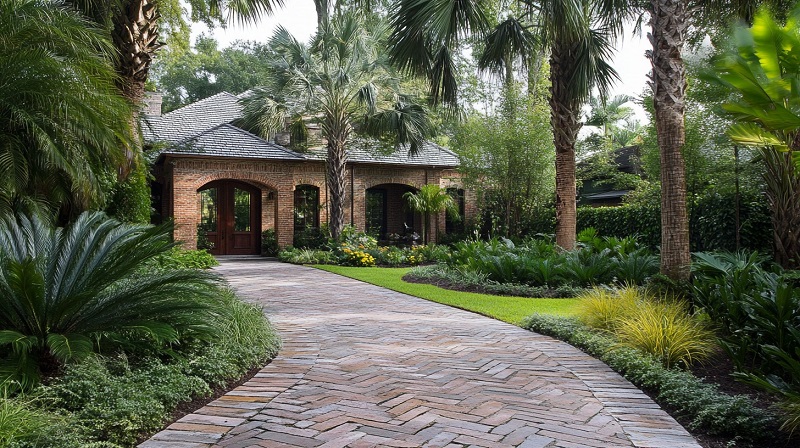
Layout Options for Thin Bricks
Straight rows offer a structured style that complements formal gardens. Herringbone patterns add energy and movement. Stack bond layouts create a clean, contemporary look. Each option adds its own character and texture.
Best Edging Choices
Metal strips or stone borders help define the path and keep bricks in place. Groundcover plants like creeping thyme or moss can soften the edges and introduce greenery between joints.
Benefits of Thin Brick Paths
- Space-saving without sacrificing visual appeal
- Easy integration with patios or steps
- Strong weather resistance with proper base and drainage
If you are looking for high-quality and outstanding design, check out Real Thin Brick
Natural Stone Paths That Highlight Organic Shapes
Natural stone paths offer irregular shapes, rich textures, and earthy tones. Each stone has unique markings that reflect nature. Gardeners often choose stone to support a flowing, relaxed layout that mirrors natural surroundings.

Popular Stone Materials
Flagstone offers wide surfaces and neutral colors. Bluestone provides cooler tones and smooth texture. Slate brings darker shades and layered patterns. Each type suits different climates and design preferences.
Design Styles with Natural Stones
Dry-laid stone paths rely on compacted gravel underneath. Mortared paths create a permanent, polished surface. Stones can also be spaced apart with moss or grass filling the gaps to add a soft, cottage feel.
Reasons to Choose Natural Stone
- Every piece has a unique texture and color
- Suitable for curved or winding paths
- Complements water features, plants, and rustic details
Gravel Trails with Minimal Maintenance Needs
Gravel trails offer a relaxed appearance and simple upkeep. Their loose surface helps with water drainage and soil protection. Gardeners often use gravel to form informal paths that connect different zones in the yard.
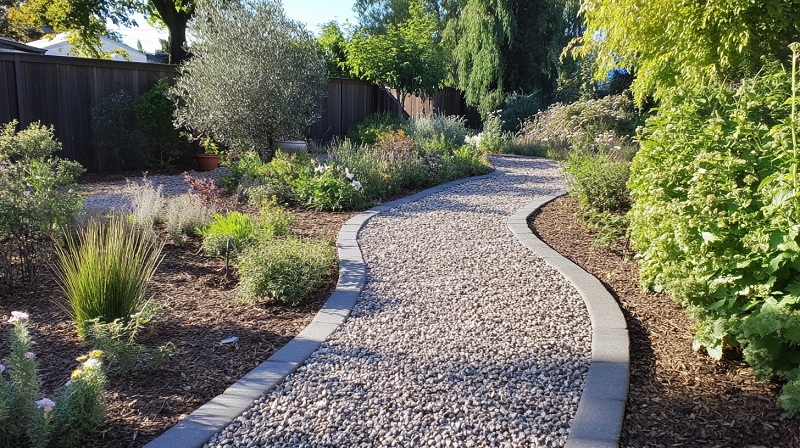
Types of Gravel for Garden Paths
Pea gravel has smooth, rounded stones that feel comfortable underfoot. Crushed granite has a sharper texture and compacts tightly. River rock features larger pieces and works best in wider paths with strong edging.
Installing a Stable Gravel Path
Use a solid base of crushed stone and landscape fabric to prevent weed growth. Compact the gravel in layers for a flat, walkable surface. Edging with stone, steel, or brick helps keep the gravel contained.
Paver Walkways with Clean, Modern Edges
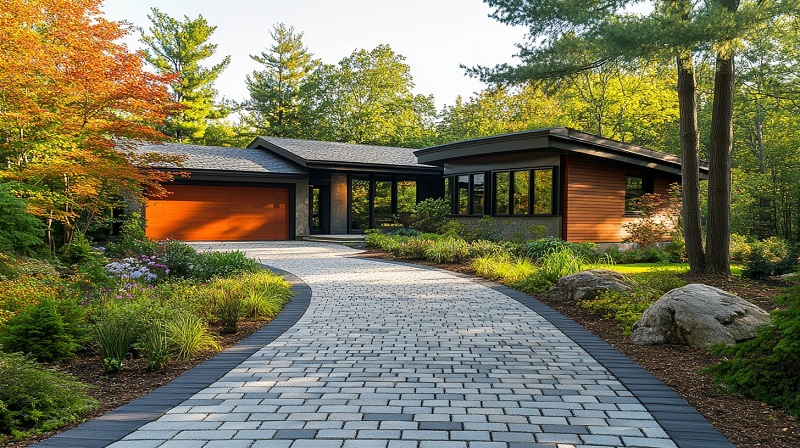
Pavers offer symmetry and clarity. Their straight edges support a modern garden layout. They also come in a wide range of materials including concrete, porcelain, and natural stone.
Large-format pavers create a sleek, uncluttered appearance. They suit minimalist gardens and urban spaces. Smaller pavers can produce rhythmic layouts, especially when spaced apart with turf or gravel between them.
Contrast plays a big role in paver design. Light-colored pavers on dark mulch create clear definition. Repeating geometric shapes add structure to open lawns or patio transitions.
Pavers also support load-bearing paths. They hold up under foot traffic and garden equipment. That makes them both beautiful and practical.
Wood Slice Steps for a Soft, Natural Touch
Wood slices bring an earthy feel. They introduce texture, warmth, and irregular shapes. Many gardeners use reclaimed wood to form trails that look handmade and artistic.
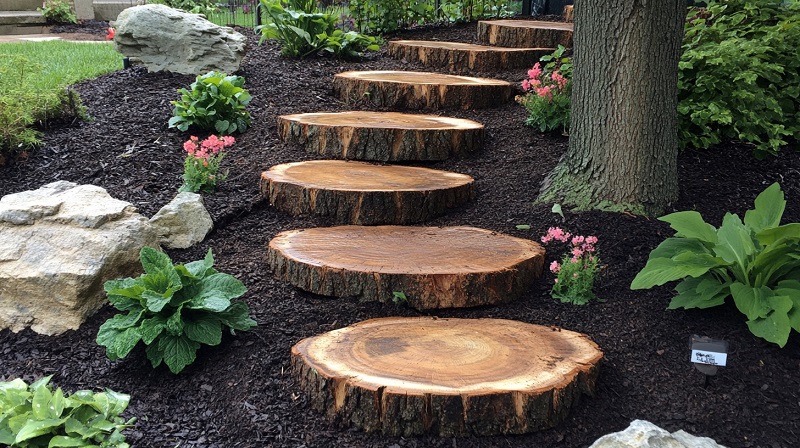
Choosing the Right Wood
Hardwoods such as oak or cedar resist rot better than softwoods. Each slice should be thick enough to stay stable and sit flat on a bed of gravel or compacted soil. Bark can remain for a rustic effect, or be removed for a cleaner edge.
Creative Placement Ideas
- Use alternating sizes to mimic tree rings
- Mix slices with gravel or groundcover
- Create staggered steps on sloped ground
Stepping Stone Designs That Add Playful Rhythm
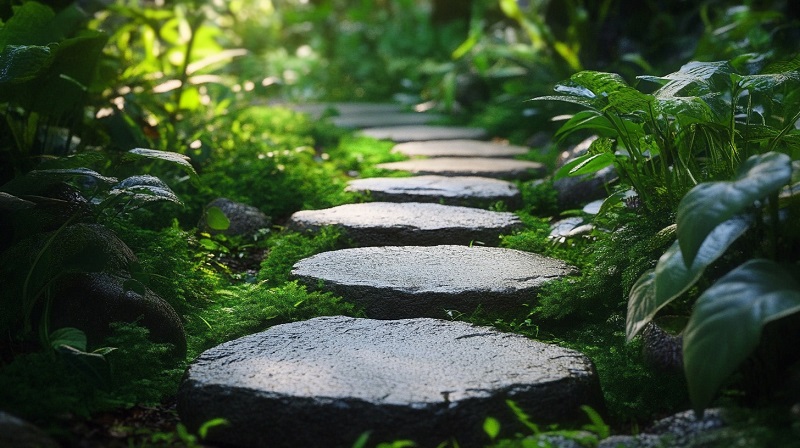
Stepping stones guide movement without full coverage. They help create a casual walking route across lawns, flower beds, or gravel zones. The spacing between each stone gives rhythm and pause to each step.
Stepping stones work well in both straight and curved layouts. They also allow grass or moss to grow between gaps, blending function with greenery. For added variation, mix materials like slate, concrete, or repurposed tiles.
Best Uses for Stepping Stones
- Crossing water features or dry creek beds
- Leading to a bench, statue, or focal plant
- Breaking up larger gravel or mulch sections
Brick and Grass Combinations for Contrast and Texture
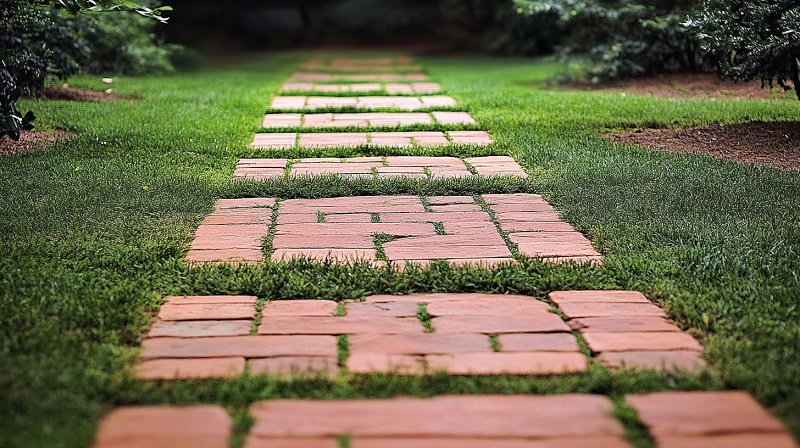
Alternating brick with grass strips creates contrast that adds interest and order. Bricks offer warmth and structure. Grass brings softness and color. Together, they form paths that look both tailored and welcoming.
This combination works well in rectangular or grid layouts. It fits best in flat gardens where clean edges can stay visible. The space between bricks must allow grass to grow without crowding. Use turf or low groundcover that tolerates foot pressure.
Benefits:
- Creates balance between natural and built elements
- Defines walking zones without full pavement
- Works as both a path and design feature
Mosaic Tile Paths with Artistic Patterns
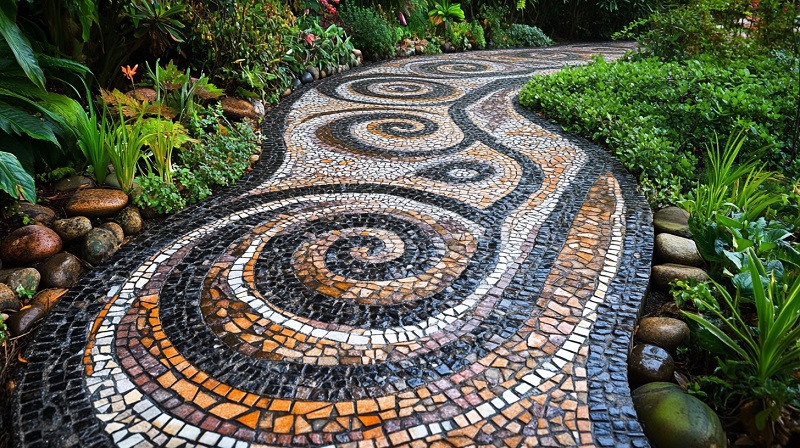
Mosaic tile paths add visual interest through color, shape, and storytelling. Unlike uniform walkways, mosaics allow full customization. Broken pottery, ceramic shards, or patterned tiles form paths that reflect personal style.
Some use mosaic paths as highlights. Others extend them across larger patio areas. Borders can stay simple to let the center design stand out. Each pattern should follow a planned layout before setting in mortar or adhesive.
Design Themes:
- Floral patterns for cottage gardens
- Geometric designs for Mediterranean flair
- Abstract layouts for modern landscapes
Curved Walkways That Create Gentle Movement

Curved walkways guide the eye and the foot. Straight lines move quickly. Curves slow things down. That shift changes how people interact with a garden.
Use gentle curves to lead toward a tree, a bench, or a flower bed. Avoid sharp bends. Let the shape feel natural. Paths should curve around existing plants, not cut through them.
Material choice depends on style:
- Flagstone fits flowing, informal paths
- Brick suits more structured curves
- Gravel allows easy shaping
The Bottom Line
A garden path shapes how space feels and how people move through it. Each design tells a story. Materials, layout, and placement all work together to create something lasting and personal.
The right path does more than connect points. It frames the view, adds purpose, and invites pause. Whether built with thin bricks, gravel, stone, or tile, each approach has value. Every step becomes part of the garden experience.
Keep the layout practical. Match materials to climate, usage, and design goals. Stay true to the space and its character. A well-placed path can turn any outdoor area into a destination.
Explore options, test ideas, and choose what fits best. The ground beneath your feet can lead to something beautiful.




